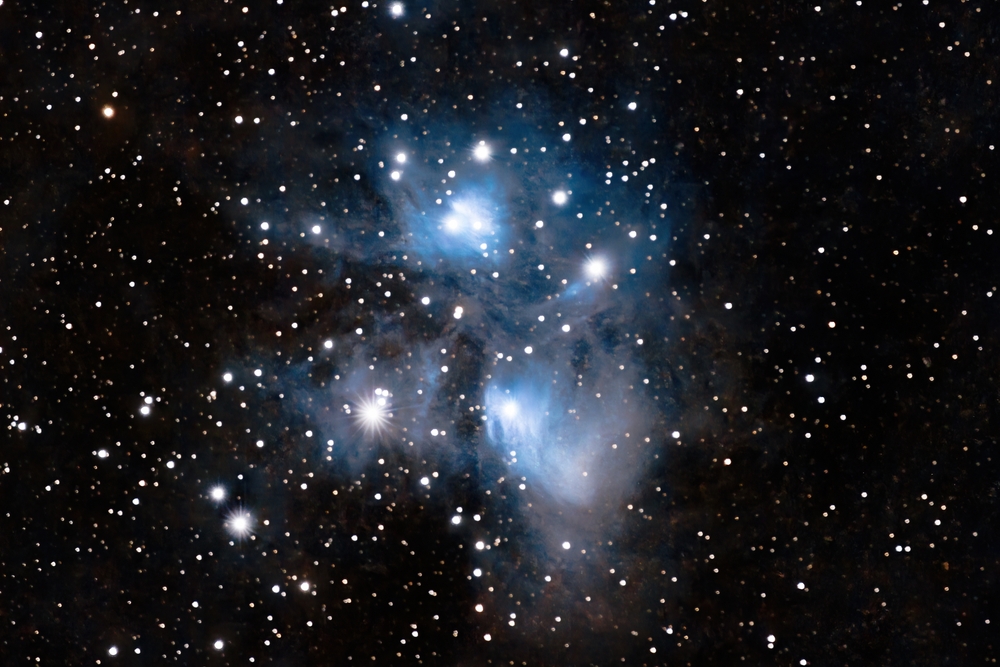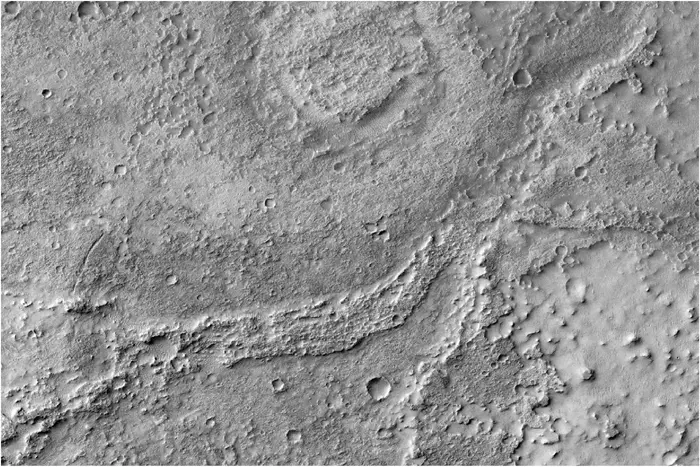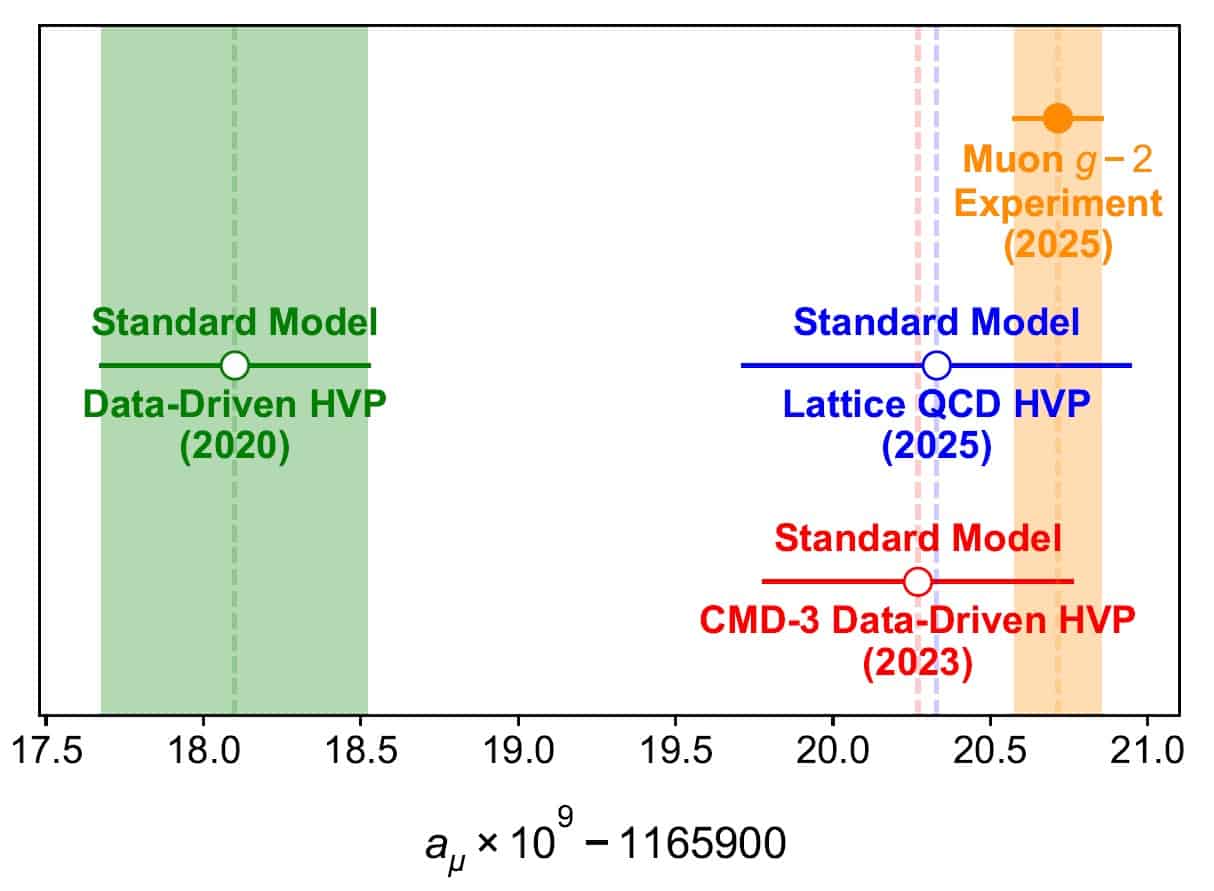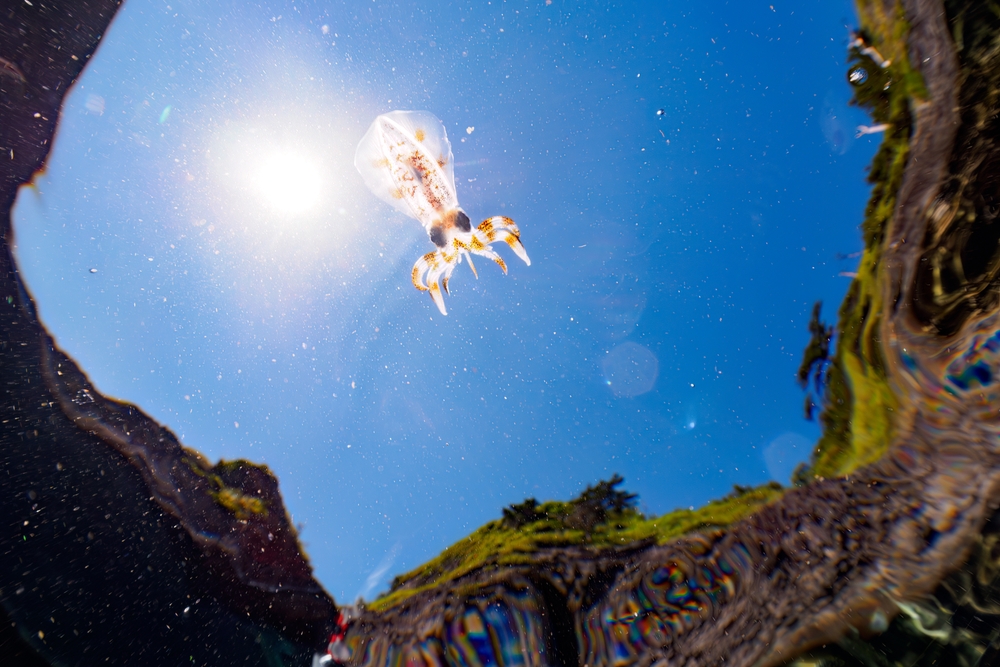The Seven Sisters Eclipse Will Temporarily Block Stars From View



In 2018, the Muon g-2 Experiment at Fermilab near Chicago, set out to measure the muon’s anomalous magnetic moment to a precision of 140 parts per billion (ppb). This component of the muon’s magnetic moment is the result of several subtle quantum effects and is also known as the muon g-2 – which reflects how the gyromagnetic ratio of the muon deviates from the simple value of two.
After six years of producing, storing, and measuring more than a trillion muons, the collaboration released its long-anticipated final result in June, achieving an unprecedented precision of 127 ppb. This landmark measurement not only solidifies confidence in the experimental value of muon g-2 but also sets a new benchmark as the most precise accelerator-based measurement of a fundamental particle to date.
Studies of the muon g-2 have served as a rigorous test of the Standard Model – physicist’s leading theory describing known particles and forces – for much of the last century. Theoretically, the muon’s anomalous magnetic moment can be predicted from the Standard Model to a similar precision as the experiment. For decades, a persistent discrepancy between prediction and measurement hinted at the possibility of new physics, with experimental results favouring a higher value than the theory. Such a difference, if confirmed, could point to phenomena not accounted for in the Standard Model – potentially explaining unresolved mysteries like the existence of dark matter.
However, extraordinary claims require extraordinary scrutiny. To address the experimental side, Fermilab launched the Muon g-2 Experiment. On the theoretical side, the Muon g-2 Theory Initiative was established as a global collaboration of theorists working to refine the Standard Model prediction using state-of-the-art methods, techniques, and input data.
One of the most problematic contributions to the theoretical value is the hadronic vacuum polarization (HVP), historically determined using experimental data as input to complex calculations. While the Theory Initiative has improved these methods, progress has remained limited due to discrepancies in the available experimental data. Crucially, a recent input from the CMD-3 Experiment diverged significantly from previous results, suggesting a larger HVP contribution (see figure below). This, in turn, yields a Standard Model prediction that aligns with the new Fermilab measurement – apparently eliminating the discrepancy and, with it, any evidence of new physics.

Despite years of investigation, the origin of the CMD-3 tension remains unknown. Its result stands in contrast to a vast catalogue of earlier data from multiple experiments over decades. As a result, the traditional, data-driven approach to estimating the HVP is deemed currently unable to produce a reliable estimate .
Thanks to the efforts of the Theory Initiative, however, the HVP can now also be calculated using lattice QCD (quantum chromodynamics) simulations on supercomputers, reaching a precision comparable to that of the data-driven methods. Multiple independent lattice QCD groups have arrived at consistent values, which also agree with the Fermilab measurement, indicating no discrepancy and thus no sign of new physics. This computational feat, once considered out of reach, marks a major breakthrough. Yet, the tension remains unresolved: Why do lattice QCD and CMD-3 agree, while both conflict with decades of experimental data?
Given the improved control in lattice QCD, the Theory Initiative has also recently updated its recommended Standard Model prediction with the HVP fully based on lattice results. The resulting value agrees with the Fermilab measurement and currently implies no evidence for physics beyond the Standard Model. However, the Initiative has emphasized that this is far from conclusive. Future predictions are intended to incorporate data-driven estimates again – once the inconsistencies in the experimental input are resolved.
The field now faces two possibilities. One is that the CMD-3 result and lattice QCD are correct. In this case, there is no new physics – but an impressive validation of the Standard Model. The other scenario is that new experimental HVP input data align with the older results, supporting a smaller HVP contribution. This would reintroduce the discrepancy with the Fermilab result, reviving the exciting possibility of new physics. In either case, the inconsistencies between CMD-3, lattice QCD, and the existing data must be explained.
So, is there new physics or not? We know there must be. The Standard Model cannot not explain dark matter, the accelerating expansion of the universe, the absence of antimatter, or the quantum nature of gravity. Precision tests like muon g-2 offer a window into this unknown. That window has not closed – for now it’s propped open.
Where we’ll be in five years is uncertain. The Muon g-2 Theory Initiative will continue to refine predictions and resolve open questions. For now, one thing is clear: the Muon g-2 Experiment at Fermilab has delivered an historic achievement and its legacy will continue to contribute to our understanding of fundamental physics for decades to come.
The post Muon g-2 achieves record precision, but theoretical tensions remain appeared first on Physics World.

An imbalance in sodium ions in the blood causes a number of physiological problems, but so far it has not been possible to measure these ion concentrations in vivo. Now researchers have successfully applied their terahertz optoacoustic technology to measure blood ion concentrations non-invasively, overcoming the challenges posed by previous approaches. They report their findings in Optica.
The idea to combine terahertz spectroscopy with optoacoustic detection came about during a recruitment trip when Zhen Tian from the School of Precision Instrument and Optoelectronics Engineering at Tianjin University in China got chatting with colleague Jiao Li – co-author of this latest study. At the time, Tian’s work was focused primarily on terahertz technology while Li had been working on optoacoustics, but the more they talked, the more interested they became in each other’s fields, and took “every available opportunity to discuss these topics in depth” during the trip.
Putting their heads together on their return, in 2021 they successfully demonstrated terahertz optoacoustic detection of ions in water, despite the challenges of the pandemic. “We thought things would progress smoothly from there, but deeper investigations revealed a series of technical challenges,” Tian tells Physics World. “What began as a fortunate opportunity soon turned into a demanding endeavour.”
Since ions are strongly polar, they absorb highly in the terahertz range, making them easy to detect. As such, Tian and Li were keen to find a scenario where the tracking of ions might be useful. Another colleague at Tianjin University (also a co-author on this new study) pointed out that ion imbalances in the blood can cause kidney disease and serious neurological conditions. The most abundant ion in the blood is sodium, and as Li explains, not only do imbalances in sodium ions need prompt correction, but the lack of means for monitoring sodium ions in vivo poses risks of neural demyelination and brain damage during sodium ion supplementation.
One of the key challenges was the high water content of body tissues, because water absorbs terahertz radiation so strongly. The researchers turned this to an advantage by using the water to detect emitted terahertz radiation from the sample, exploiting the fact that the optoacoustic response is temperature dependent. At cold temperatures, absorbing terahertz radiation emitted from the sample heats up the water, which detectably impacts its optoacoustic signal. Therefore, comparing the sample’s optoacoustic response to terahertz radiation with values for pure water gives a quantitative indication of the absorption by the sample and thus the concentration of ions present.
Although the researchers demonstrated a proof-of-principle for this approach in 2021, they then had to battle with several other issues. They improved the stability of the light source by reducing thermal fluctuations and making other optimizations to the experimental environment; they used higher-intensity light sources and enhanced detectors to increase the detection sensitivity; and they used spectral filtering to achieve molecular specificity in the optoacoustic detection. Tian expresses his gratitude to Yixin Yao, a co-first author of the paper, as well as to the students involved. “It was their commitment and perseverance that helped us overcome each hurdle,” he says.
The team demonstrated that the enhanced system could detect sodium ions in human blood flowing through a microfluid chip and measure increases in blood sodium levels in living mice. The operating temperature for the technique was 8 °C, cold enough to cause damage to many parts of the body. However, the researchers noted that the ear is particularly resilient to temperature, so they cooled and monitored just the animal’s ear, limiting the experiment duration to 30 min. This way they were able to complete their measurements without incurring any tissue damage.
Although the numerous previous in vitro experiments had left the researchers full of “anticipation” for the success of the attempts in vivo, Tian tells Physics World, “when we saw the terahertz optoacoustic signal enhance after sodium ion injection, all of us, including the students conducting the experiment, cheered with excitement”.
“It is very nice to see [that] fundamental studies on dielectric response of aqueous salt solutions may result in a sensor for human health,” says Andrea Markelz from the University at Buffalo, whose research focuses on biomolecular dynamics and terahertz time domain spectroscopy, although she was not directly involved in this study. She notes that tagless terahertz-based biomonitoring is challenging, due to both the strong aqueous background and the lack of narrowband signatures. “It will be very interesting to see if the sensitivity remains robust for different organisms under different conditions,” she adds.
Next, Tian and his collaborators plan to apply the approach to detect neural ion activity without the need for labelling. “It’s admittedly a bold and ambitious idea – but one that has truly excited our team,” he says.
The post Terahertz optoacoustics allows real-time monitoring of blood sodium levels appeared first on Physics World.


Outer space, the new high ground, is no longer the solitary domain of state powers. The growing participation of the private sector alongside government initiatives signals a dramatic transformation in the space ecosystem. This democratization brings tremendous opportunity but, with it, alarming vulnerabilities. The growing proliferation of sensitive technologies across borders, often without proper oversight, […]
The post Securing the new high ground: tackling export loopholes in space tech appeared first on SpaceNews.

Despite flat budgets for the FAA office that oversees commercial spaceflight, industry has mixed opinions of new launch fees to help fund it.
The post Industry doubts effectiveness of new launch licensing fees appeared first on SpaceNews.

Beijing’s ‘Belt and Road’-aligned constellation expands, forcing a strategic reckoning for Western space networks.
The post China enters race for LEO broadband dominance appeared first on SpaceNews.
Researchers at the Okinawa Institute of Science and Technology (OIST) in Japan have identified the first known example of hyperdisorder occurring in a biological system. This phenomenon combines order at the microscopic scale with disorder at the macro level, and it is often present in systems studied in statistical physics. However, the researchers were surprised to observe it while monitoring the development of pigment cells in squid skin. As the hyperdisorder is directly linked to the squid’s growth, the researchers say the discovery could shed light on the physics of growing structures.
In inanimate objects, the emergence of disordered patterns is relatively well understood in physical terms. Living creatures are different, however, as they can display unexpected phenomena as they grow and develop.
To better understand how growth impacts the formation of patterns, a team led by Robert Ross, Simone Pigolotti and Sam Reiter at OIST studied how pigment cells known as chromatophores arrange themselves on the skin of squid as the animal grows and its skin expands. “These pigment cells are important because they play an essential role in camouflage and communication for these animals,” Reiter explains.
The researchers took a series of 3D optical images of the squid over a period of three months. These observations revealed that the chromatophores behave very differently from other disordered structures. “The chromatophores appear at fixed positions in relation to one another, in a specific pattern,” Reiter explains.
It is this pattern that met the technical criteria for hyperdisorder, which is defined as occurring when the variation in the number of points within a particular measured space increases more rapidly than the volume of that space.
In the squid he and his colleagues studied, Ross explains that new chromatophores appear only at a minimum exclusion distance from pre-existing ones as the animal grows. “We found that this rule coupled with tissue growth leads to the highly unusual statistical patterns we observe,” he says. “Simply put, when you observe a tiny area in a system, it may appear quite ordered, but when viewed at larger scales, it becomes more disordered.”
To explain this finding, the researchers modelled squid development as static circle packing on a growing surface and showed how the hyperdisordered behaviour emerges. “The result is exciting because it highlights the importance of growth on physical properties,” Ross says.
The researchers note that other growing systems, such as the cells in chicken retinas, often display the exact opposite property, which is known as hyperuniformity. In these systems, there is long-range order and patterning despite randomness at a close scale, Ross explains. Such behaviour is thought to provide optimal retinal coverage properties for vision. “This is what we thought we would see in the squid, but what we actually observed was quite different and we have not yet seen any other instances of this packing behaviour in biology,” he says.
The mechanisms described in this work, which is detailed in Physical Review X, may be common in growing, dense natural systems, says Ross: “Indeed, this simple type of growth combined with distance-limited cell insertion might be a general feature of many biological structures.”
Spurred on by their findings, the researchers plan to continue working on a variety of theoretical and experimental systems related to the physics of growing structures. “These include both growing brains and pattern formation in fish,” says Ross. “We hope these systems will provide further examples of the novel physics of growing systems,” he tells Physics World.
The post Hyperdisorder appears in pigment patterns on squid skin appeared first on Physics World.


The Tactical Surveillance, Reconnaissance and Tracking (TacSRT) program was left out of the 2026 defense budget
The post Congress to push Pentagon to fund commercial satellite intelligence program appeared first on SpaceNews.



Committee directs Air Force to study heavy-lift launch capacity, LOX-methane safety protocols
The post Senate Armed Services’ defense bill includes mandates on space launch, missile defense, spectrum protection appeared first on SpaceNews.

Firefly Aerospace has filed paperwork to go public, seeking to raise an unspecified amount of money as part of a trend of space companies taking traditional approaches to public markets.
The post Firefly Aerospace files to go public appeared first on SpaceNews.




Varda Space Industries, a company developing spacecraft for microgravity life sciences and hypersonics research, has raised $187 million to expand the scope and cadence of its missions.
The post Varda Space Industries raises $187 million appeared first on SpaceNews.
